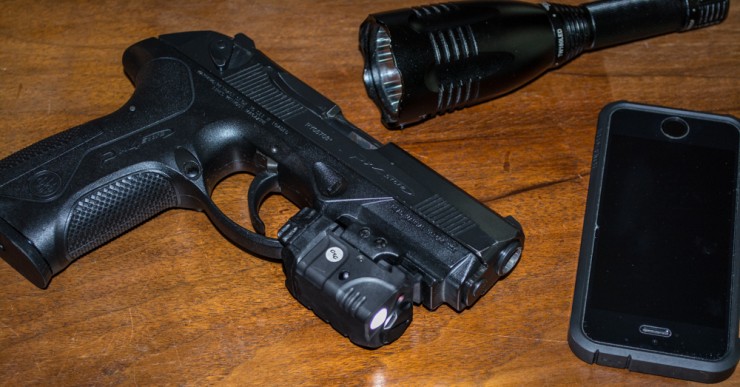
Why not add a light and laser to your nightstand gun?
Last time, I discussed the types of handgun-mounted lasers and how they operate. Now, let’s take a look at the “why” behind mounting a laser on your handgun. In other words, what are the benefits? Next in this series, we’ll talk about what some consider drawbacks. I consider most of the perceived drawbacks myths, but you can make your own decision when we get to that point.
In my view, there are five primary benefits to using a laser on a handgun: training, low-light shooting effectiveness, support of the tendency to focus on the threat, ability to shoot from unconventional positions and increased hit ratio. Let’s take a look at each of these.
Also see: Turn Your Handgun into an Effective Home Defense Tool
Lasers can facilitate training and practice
There are two scenarios where use of a laser during practice can make you a better shooter.
First, using a laser while doing dry fire practice at home will provide absolute feedback on the quality of your trigger presses. If you move the gun while pressing the trigger, even just a little, the laser on your (safe backstop!) dry fire target will visibly move. Tiny movements that might not be visible if you’re looking at the front sight will be amplified on that laser dot across the room. When you can press the trigger smoothly every time while maintaining a steady laser dot on your target, you’re getting good.
Second, a laser can help with live fire practice. If you’re milking the gun or jerking the trigger when you fire a live round, the laser on the target will clearly show that. If you see your laser dot move down and left (for right-handed shooters), you’ve got some work to do on your trigger press.
In support of both of these training scenarios, the laser also helps with your follow through after the shot. Focus on seeing that laser dot in the same position after the shot as before.
Lasers help you aim in low-light conditions
About 80% of defensive shootings occur in low-light situations. Tritium night sights can certainly help, but you can’t miss the bright beam of a red or green laser in twilight or dark conditions. You certainly don’t have to quit trying to find your front sight in low light, but I guarantee that the laser beam will find you without much effort.
In low light, even a glowing night sight needs to be aligned with the target. By eliminating the need to line up two different things in two different sight planes (the front sight and the target), the laser speeds aiming in the dark. Put the dot on the target – that’s all there is to it.


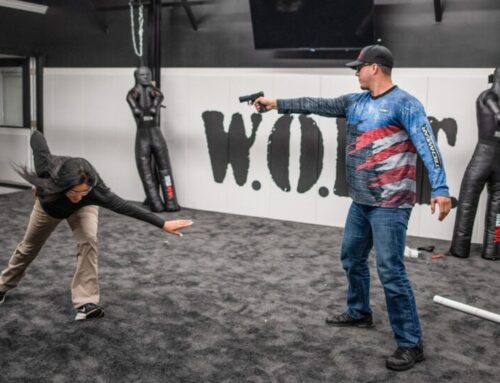
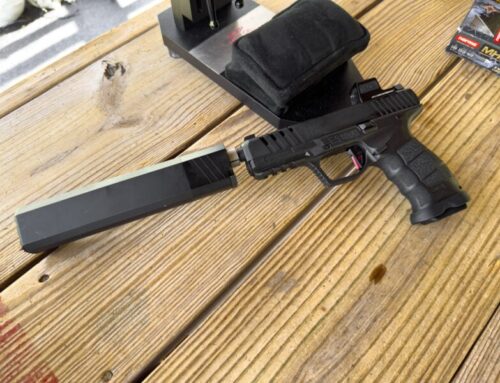
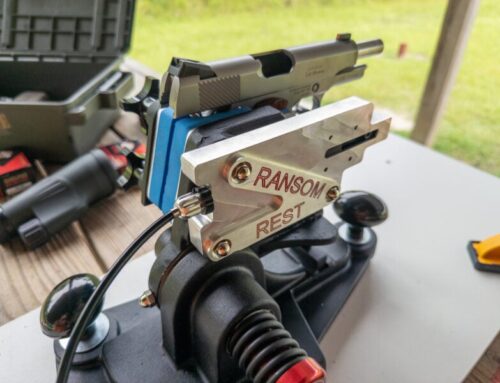
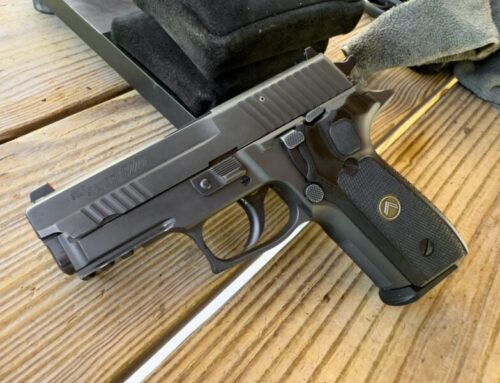
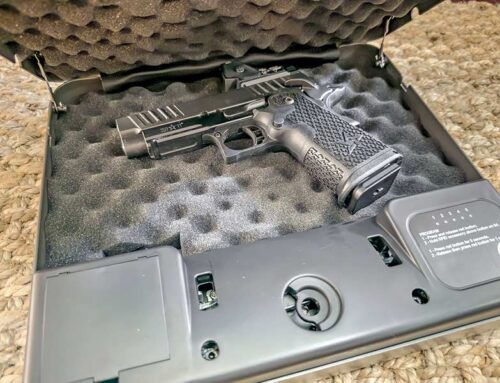
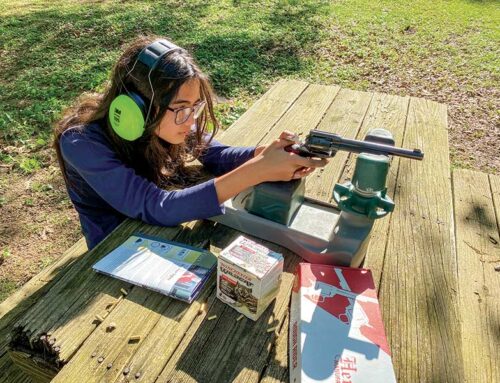
Lasers can also act as deterrents. I would not say to count on this, but IF the threat stops before you have to press the trigger,,,then good for you and the bad guy.